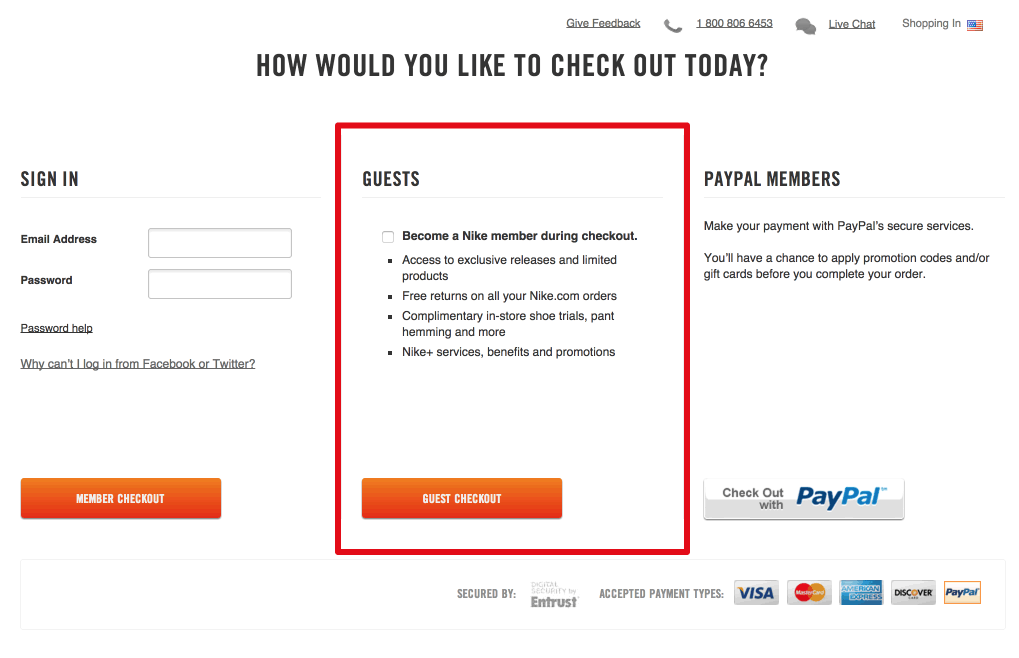Cart abandonment is a common phenomenon in online marketing. Almost every online business and e-commerce store loses a significant chunk of revenue because of cart abandonment.
But if you think about it from a broader perspective, it affects every area of your online marketing strategy — including search engine optimization (SEO), search engine marketing (SEM), and paid social (such as Facebook Ads).
Cart abandonment and its impact on SEO reporting
Let’s take the SEO example.
Although SEO brings “free” traffic, we know that nothing is free. There is a significant investment involved in every SEO campaign — from drafting and executing an SEO strategy to creating new content on a regular basis.
Therefore, in a way, the number of total visitors coming to your website is ultimately a vanity metric. What matters more is how many leads you are able to convert out of those visitors and, most importantly, how many of those visitors actually purchase something from your website.
That’s how you can calculate the true ROI for your SEO campaign — which is a crucial component of SEO reporting.
Cart abandonment is a major hurdle in achieving a high ROI. After all, 75 percent of people never return to the carts they abandon. In that case, all your efforts go to vain.
In this blog post, we are going to share 8 proven tips on decreasing the cart abandonment rate. By successfully minimizing the number of total abandoned carts, you can significantly improve the return on investment.
1. Creating a sense of scarcity and urgency
If your website visitors believe there is nothing wrong with abandoning their purchase right now, and they can come back later, that’s a problem.
Ideally, you want them to go through with the transaction completely. As we learned earlier, 75 percent of people will never return to abandoned carts. Therefore, letting them go is a big risk.
The idea is to create a sense of urgency and scarcity.
For instance, if there is a discount offer, make sure to mention it is a limited-time offer. A countdown on the checkout page is also generally a good idea. Moreover, showing the remaining items available in stock can also create scarcity and encourage more shoppers to complete the transaction.
2. Minimizing price shock
Did you know that price shock is one of the biggest reasons why people abandon online shopping carts?
If buyers suddenly find out that they have to pay more than what they initially led to believe, chances are that most of them would just abandon the cart and never return back. Unexpected shipping costs, for example, can be a big frustration.
In fact, approximately 28 percent of online buyers will abandon their shopping carts if they see unexpected shipping costs.
Therefore, try to be upfront about the final price. Be especially careful with the shipping cost — as that can often be a surprise for many online buyers.
Apart from the shipping and delivery charges, make sure that there are no other hidden charges that might surprise buyers at the very last moment.
3. Using “trust logos”
Online privacy and safety of data are big concerns for online shoppers. According to a Shopify study, 61 percent of buyers did not go through with the purchase if trust logos were missing. Moreover, 75 percent of online buyers abandoned carts if they didn’t recognize the trust logos.
Therefore, it is crucial to include recognizable trust logos on the checkout page. Here is an example.
4. Offering multiple payment options
The e-commerce industry has grown significantly over the last few years. Along with that, various payment options have also popped up, e.g., Apple Pay, Google Wallet, PayPal, credit cards, etc.
The important part is that online shoppers expect e-commerce stores to have these various payment options. In fact, not having multiple payment options at the checkout stage may increase the cart abandonment rate by up to 7 percent.
Therefore, make sure that the most popular and commonly used payment options are available to your potential buyers. This may play a key role in decreasing the cart abandonment rate and increasing the ROI of your marketing campaigns.
5. Simplifying the checkout process
Study reveals that more than 26 percent of online shoppers won’t complete the transaction and abandon the shopping cart if they find the checkout process too complicated or time-consuming.
In this age of smartphones and mobile devices on the go, people often want to complete the transaction as soon as possible.
It is your job to create a very simple and intuitive user experience that respects the buyer’s time, does not take long to navigate or finish, and is free of stupid barriers.
6. Allowing guest checkout
One such example of the aforementioned barriers is creating a user account.
Many e-commerce stores do not allow shoppers to checkout unless they create an account on the website. While it is a good tactic to later use for up-selling and cross-selling products and encourage repeat sales, you should not force people to sign up.
If you want to decrease the cart abandonment rate, there should always be an option to allow guest checkout — without needing a user account.
Forcing visitors to create an account will likely lead to an approximately 23 percent higher cart abandonment rate.
Here is a good example that you should consider following. The website gives users both options: member checkout and guest checkout.
7. Optimizing your page loading speed
The loading speed of a web page is a key component of the overall conversion rate. This also includes the cart abandonment rate — especially if a user is adding multiple products by browsing multiple pages.
According to a study by Visual Website Optimizer, shopping cart conversion rates can drop up to 7 percent because of a one-second delay in the page load time.
That’s a significant chunk of lost revenue, which can otherwise easily be saved by taking a few steps and improving the website loading speed.
Check out how long your page takes to load with our free speed test, and learn how you can improve the page loading speed.
8. Retargeting
Sometimes, no matter what you do, there are bound to be some abandoned carts.
It is important to note that while you can minimize the cart abandonment rate, it is virtually impossible to completely eliminate abandoned carts.
The good news is that there is still a way to bring some of the abandoned shoppers back to their carts or to your website and encourage them to buy the product they initially intended to.
The answer lies in retargeting.
Retargeting is a way to filter and track the people who added products to a shopping cart but later abandoned it without completing the purchase.
The idea is to reach out to them again (via email, Facebook ads, or search engine ads) and remind them or even incentivize them to go back to their carts and purchase the products.
For example, you can offer a limited-time discount if they complete their purchase within the next 12 hours.
Learn more about retargeting here.
Conclusion
Cart abandonment is virtually impossible to eliminate. However, as we learned, there are various proven ways that can help reduce its impact on the bottom line of your business.
Follow the tips mentioned in this article, and you would be able to improve your return on investment (ROI) by encouraging more people to complete the purchase. This will help you tremendously with SEO reporting and justifying your SEO campaigns.
